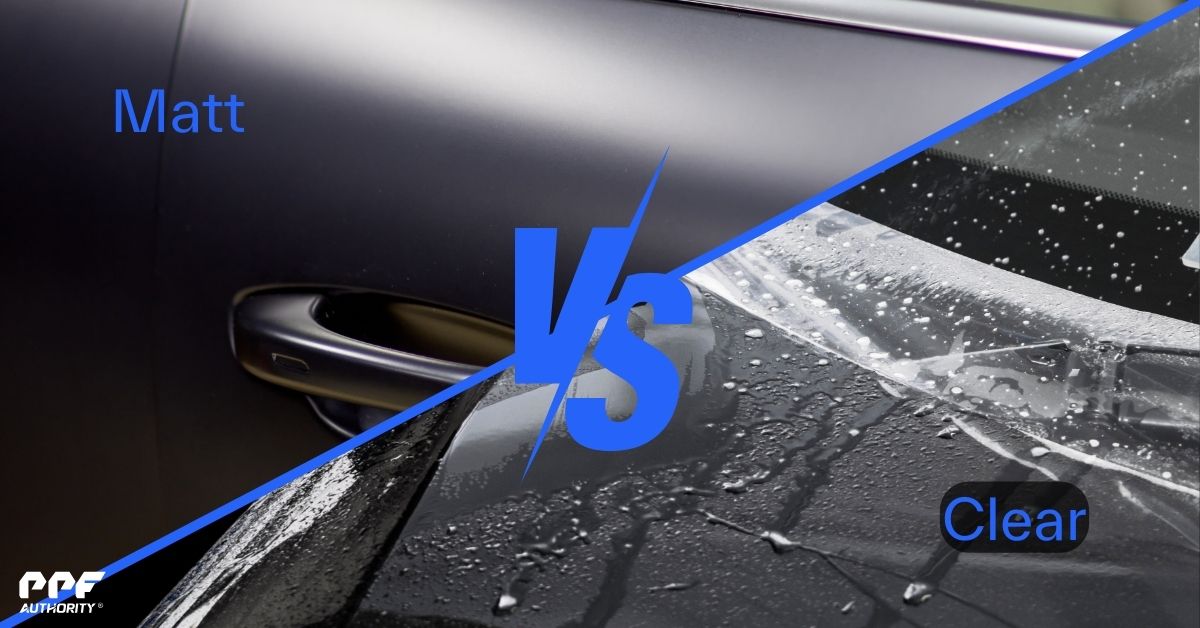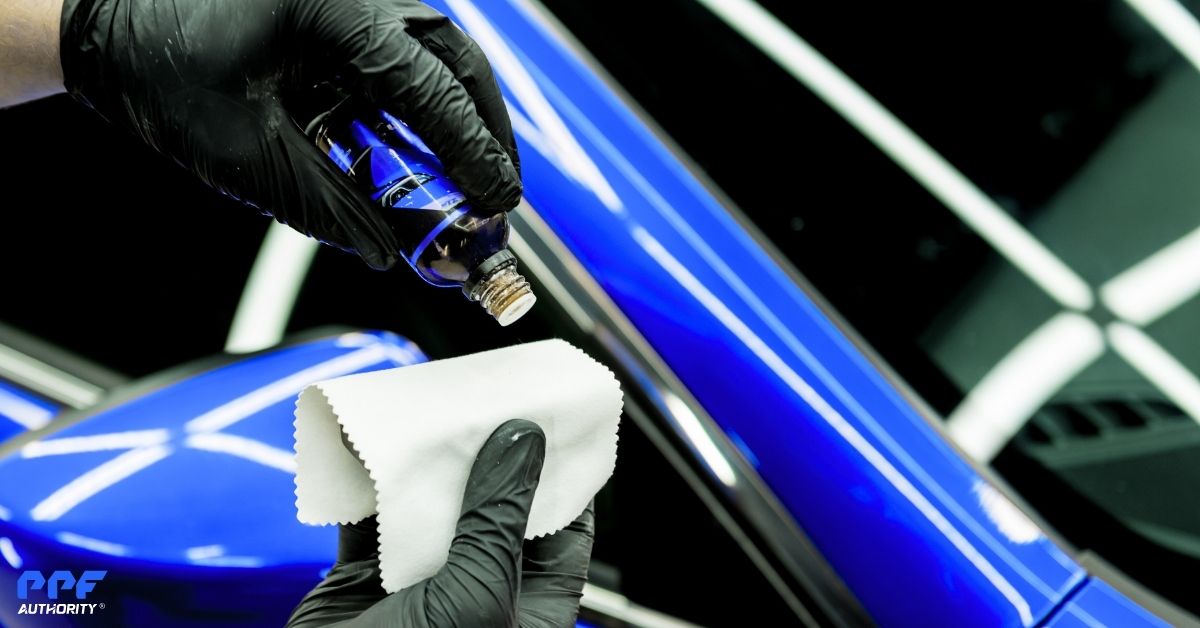What Are Light Transmission Laws?
Light transmission laws regulate how much light can pass through headlights, tail lights, and other vehicle lighting systems. These laws ensure that:
- Road Safety: Your vehicle’s lights remain bright enough to be seen by other drivers, especially in low-visibility conditions like rain, fog, or nighttime.
- Compliance with Standards: Automakers design headlights and tail lights to meet specific brightness levels, and modifications must not reduce their effectiveness.
Key Metric:
Light transmission is measured as a percentage, often referred to as Visible Light Transmission (VLT). This indicates how much light passes through the film or tint applied to the surface. For example:
- 100% VLT: No tint; all light passes through.
- 50% VLT: Half the light passes through; the rest is blocked by the tint.
- 20% VLT: A darker tint that allows only 20% of light to pass through.
How Light Transmission Laws Apply to Slate PPF
Slate PPF is a tinted film that adds a grayish finish to your headlights and tail lights. While it enhances style and protection, its light transmission level must comply with local regulations to ensure your vehicle remains road-legal.
Headlights
Light transmission laws for headlights are particularly strict because headlights play a critical role in visibility and safety.
- Most regions require headlights to transmit at least 70-80% of light, depending on local laws.
- Heavily tinted headlights with low VLT can reduce beam intensity, compromising your ability to see the road and be seen by other drivers.
Slate PPF Considerations:
- Opt for lighter Slate PPF shades with higher VLT to maintain compliance and safety.
- Ensure the film does not distort or obstruct the light’s beam pattern.
Tail Lights
Tail lights have specific light transmission requirements to ensure they are visible to other drivers, particularly when braking.
- Many regions require tail lights to remain bright enough to be seen from a specific distance, typically 300-500 feet.
- Laws may restrict the level of tint that can be applied to tail lights to prevent reduced visibility.
Slate PPF Considerations:
- Choose a medium or lighter tint that balances style with safety.
- Ensure brake lights, turn signals, and reverse lights remain clearly visible.
Key Considerations for Compliance
1. Regional Variations in Laws
Light transmission laws vary significantly by country, state, and province. For example:
- United States: Each state has its own regulations, with some states allowing darker tints and others imposing stricter limits.
- Canada: Generally has stricter tinting laws, with heavy restrictions on modifying headlights and tail lights.
- Europe: Regulations often follow European Union standards, requiring high light transmission for safety.
Pro Tip: Check your local Department of Motor Vehicles (DMV) or transportation authority’s guidelines before applying Slate PPF.
2. Certified PPF Products
Some Slate PPF products are designed to comply with light transmission laws by offering a balance of tint and transparency. Look for:
- DOT or ECE Compliance: Films that meet Department of Transportation (DOT) or Economic Commission for Europe (ECE) standards are more likely to be road-legal.
- Light Transmission Ratings: Choose a Slate PPF product with a clearly labeled VLT percentage that aligns with local regulations.
3. Professional Installation Matters
Proper installation ensures your Slate PPF does not reduce the light’s effectiveness or violate legal requirements.
- Precision Application: Professional installers ensure the film is evenly applied without distorting the light beam or creating uneven tint levels.
- Expert Guidance: Installers familiar with local laws can recommend compliant Slate PPF shades and ensure your vehicle remains road-legal.
Risks of Non-Compliance
Failing to adhere to light transmission laws can result in:
- Fines and Penalties: Law enforcement may issue citations for non-compliant headlights or tail lights.
- Inspection Failures: Tinted lights may cause your vehicle to fail safety inspections, requiring removal of the film.
- Reduced Safety: Excessively dark lights can compromise your visibility, increasing the risk of accidents
How to Choose the Right Slate PPF
1. Understand Your Needs
- For headlights: Prioritize safety and light output with higher VLT Slate PPF (e.g., 70% or higher).
- For tail lights: Consider medium VLT options that balance style with visibility (e.g., 50-70%).
2. Verify Product Specifications
- Check the VLT percentage of the Slate PPF before purchasing.
- Choose films labeled as compliant with local or international standards.
3. Consult a Professional
- Work with a certified installer who can recommend the right Slate PPF shade for your vehicle and ensure compliance with local laws.
Conclusion
Light transmission laws are essential for maintaining road safety and ensuring your vehicle’s headlights and tail lights remain functional and visible. When using Slate PPF to darken your lights, it’s important to choose a film with an appropriate VLT percentage and follow local regulations.
By opting for a high-quality, compliant Slate PPF and working with a professional installer, you can achieve a stylish, protective finish while staying on the right side of the law. Always prioritize safety and legality to enjoy the benefits of Slate PPF without unnecessary risks.

